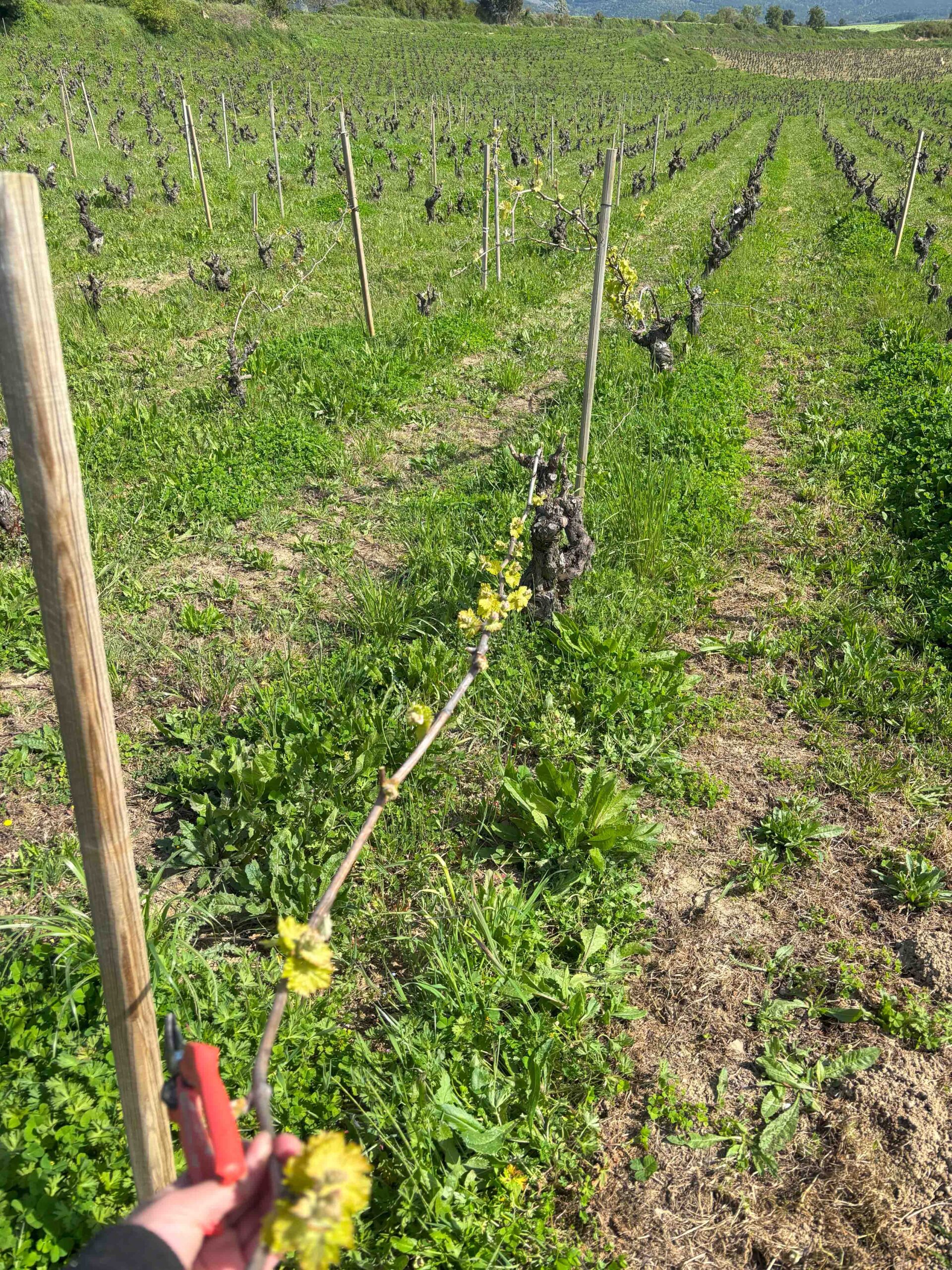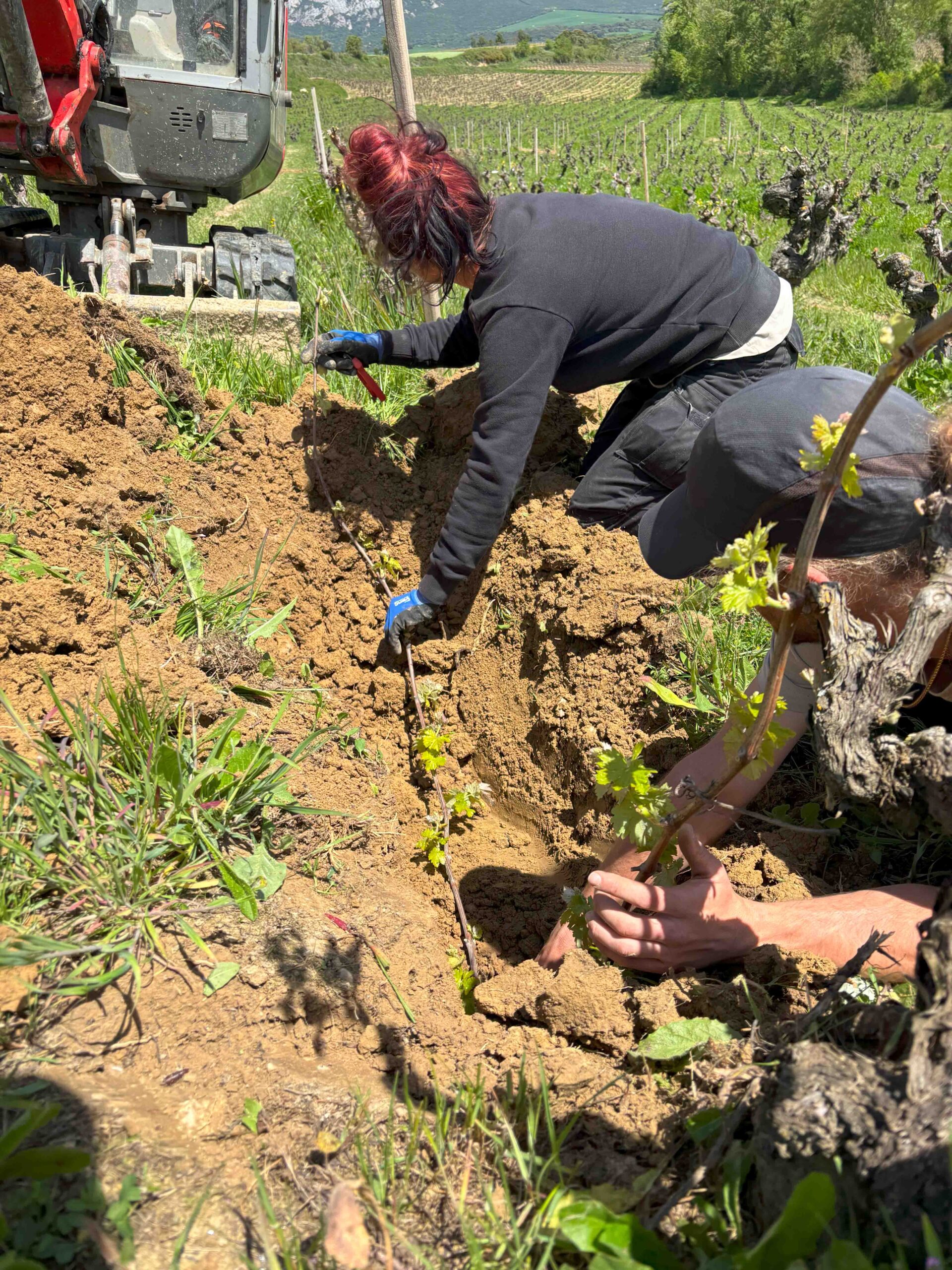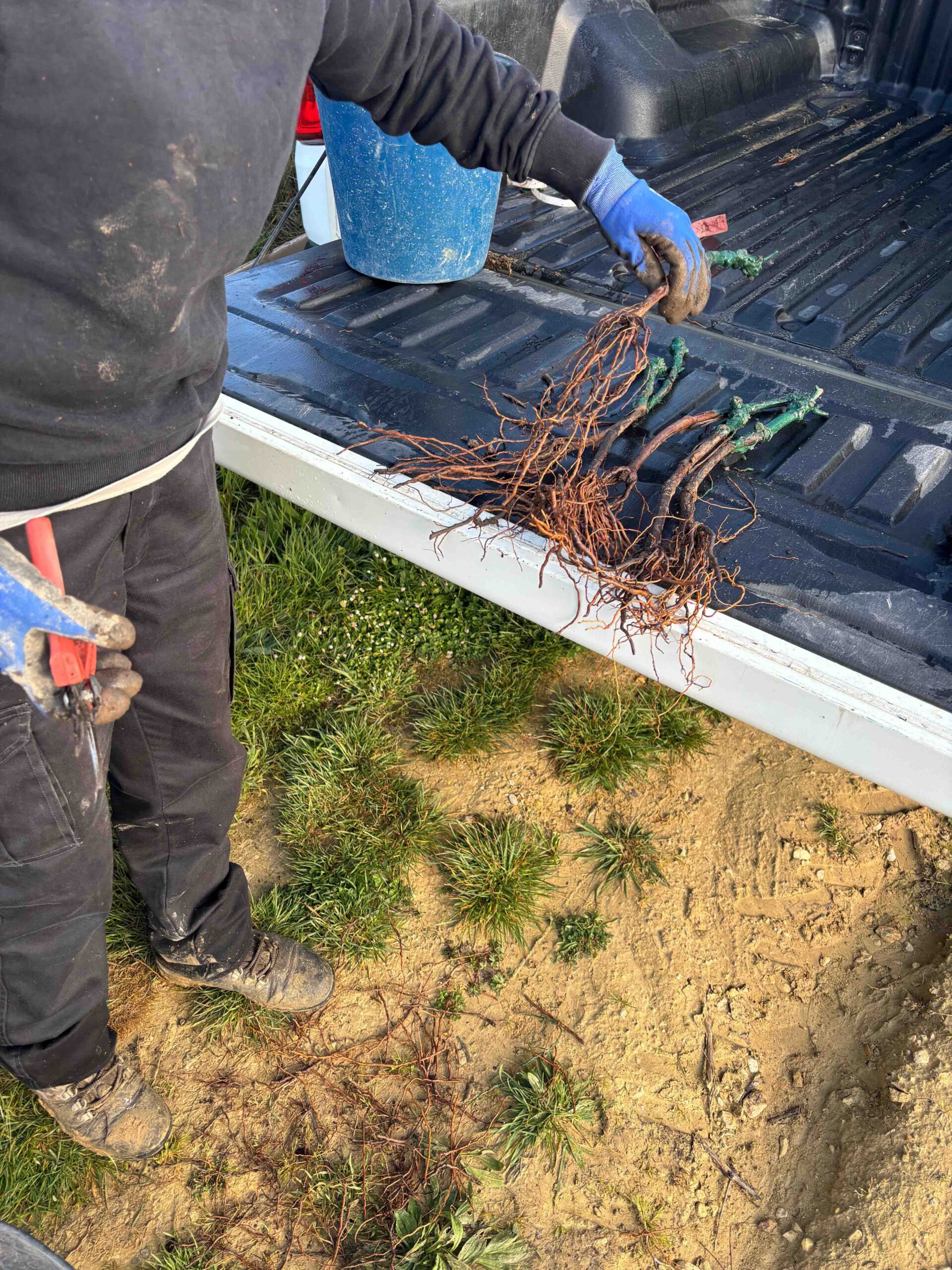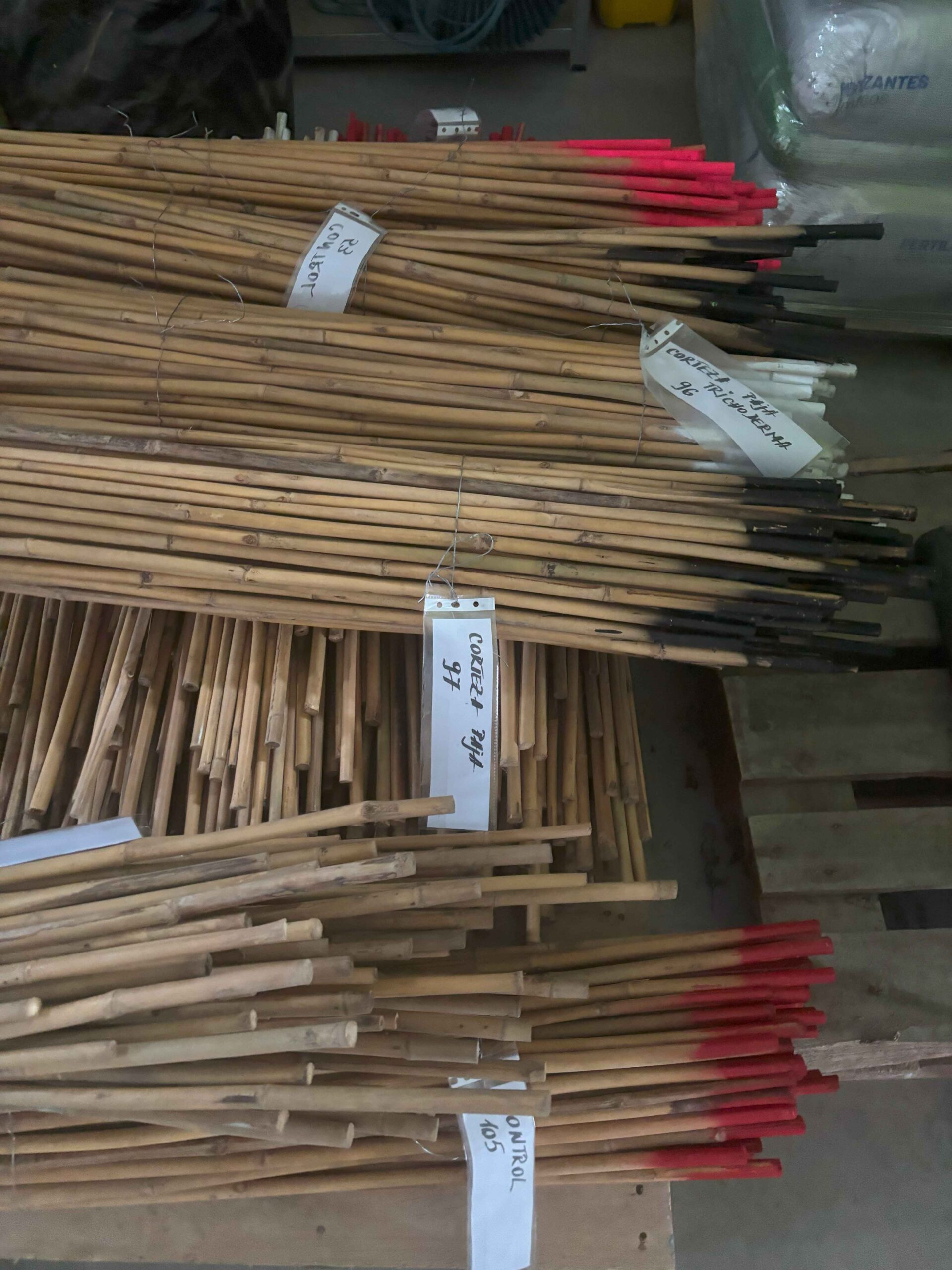Replanting in Search of Reviving Old Vines
At Aiurri, we are dedicated to recovering small plots of old vines that grow at the foot of the Sierra de Toloño. These vines hold essential genetic material that forms the foundation of a comprehensive regeneration project. However, the passage of time, agricultural mechanization, and vineyard diseases have all contributed to the loss of some plants.
Currently, we manage 25 hectares of estate-owned vineyards, spread across 60 plots, 90% of which were planted before 1980. From this date onward, we classify vines as “old,” not only due to their age but also because of their varietal and intra-varietal diversity. Within these plots, there are missing vines (known as marras, or dead/unproductive plants). The number varies from plot to plot, but we estimate they account for around 20–25% of the productive surface area. This has led us to begin a replanting process in some plots, aiming to restore and highlight this viticultural treasure.
To carry out these replantings, our viticulture team began mapping the vineyards in July 2024 using two methods: manually, and with innovative artificial intelligence techniques involving drones. These technologies have enabled us to quantify the number of missing or dead vines in our plots.
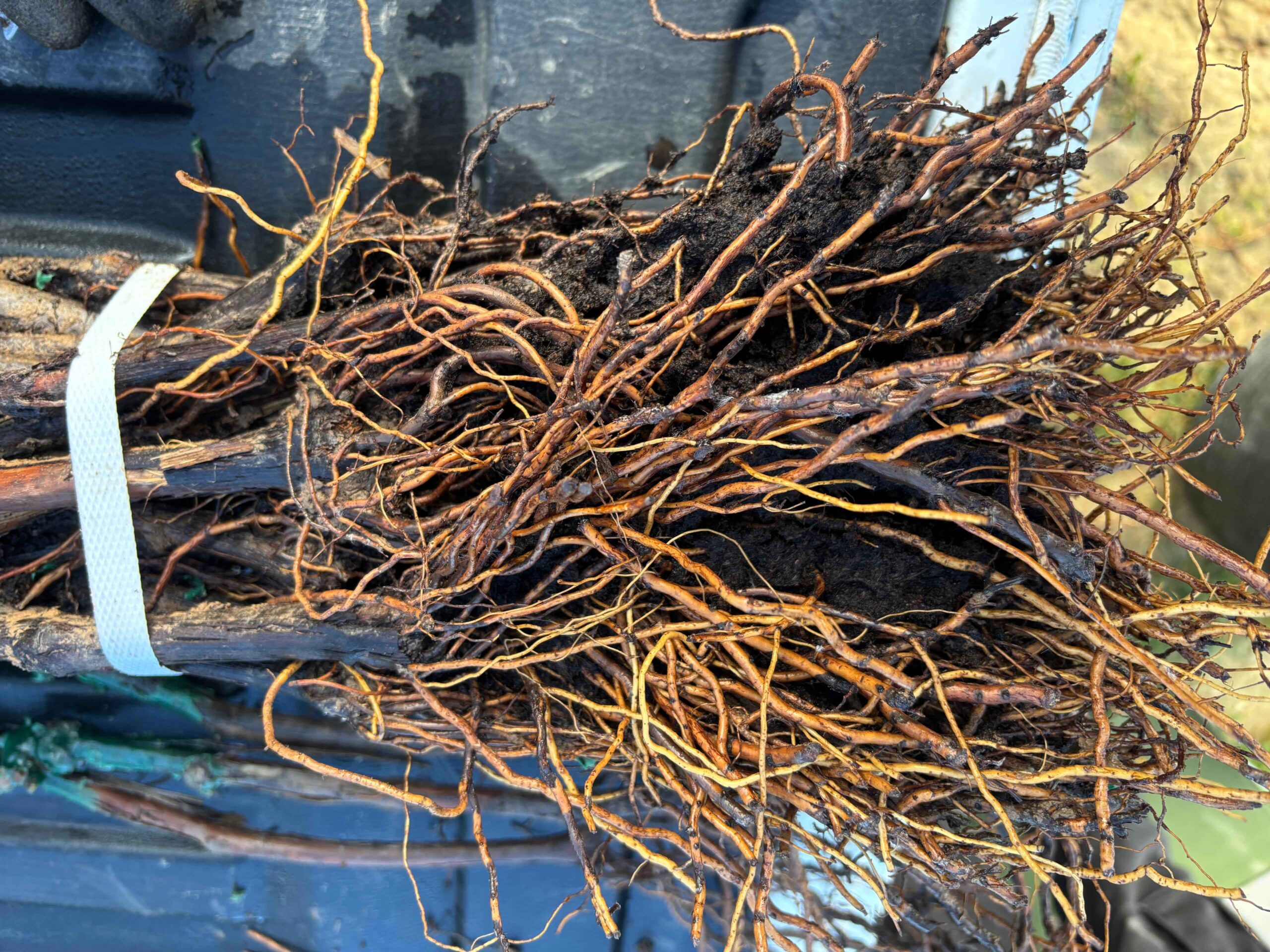
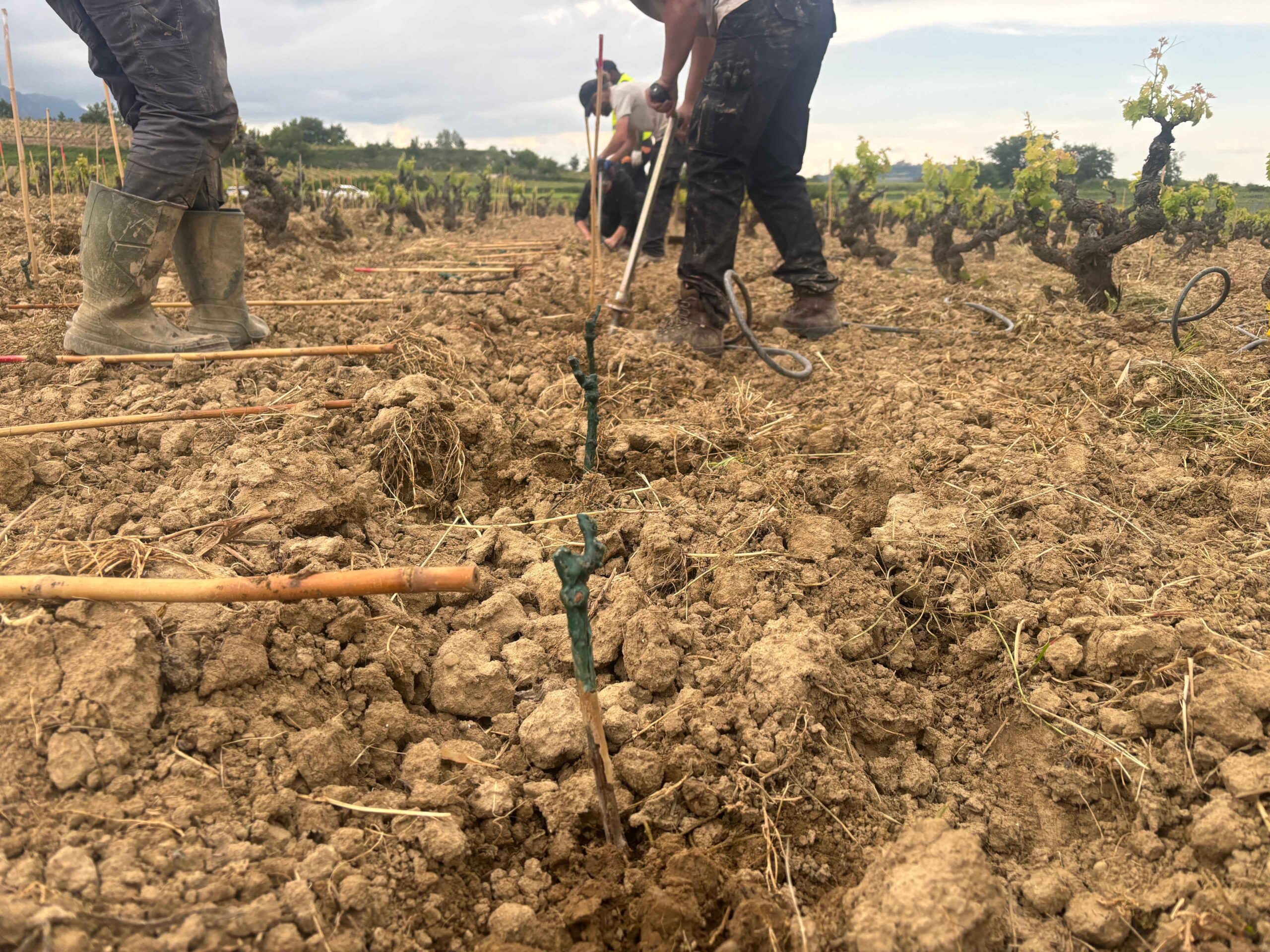
Five Thousand Plants Across Six Plots
Once the extent of missing vines (marras) in the plots was assessed, a strategic replanting plan was put into motion for upcoming seasons, beginning in 2025. Replanting began in several of our plots, some of which are part of the CDTI research project Revivid, aimed at studying and evaluating the most effective methods for carrying out this work.
The first step involved removing the remains of dead vines and roots from each gap using a small excavator. At the same time, soil studies were conducted on the plots to be replanted, to understand the initial conditions the new vines will face and to better tailor the replanting process and subsequent vineyard management.
Specifically, 5,000 vines were replanted across various plots: Uribe Viejo, Viejete, Camposalvos, Salas, Guardaviñas, and San Andrés. The work emphasized studying several factors to achieve the best outcomes in the future.
In our Uribe Viejo and Viejete vineyards, we carried out a replanting process using different types of plant material to evaluate which performs best over time: American rootstocks for later grafting with material from the same plot, and pre-grafted vines from nurseries—both one-year and two-year-old—in rooting fields. In our unique Salas vineyard, we also applied layering, a traditional propagation technique that involves burying a section of a vine shoot to generate a new plant connected to the mother plant. While this method has proven highly effective, factors like the vigor of the existing plants or the number of missing vines in a plot can limit its feasibility.
Meanwhile, in Camposalvos, we initiated a study focused on improving rhizosphere soil health. For this, we incorporated various organic amendments, such as worm humus, natural root stimulators, mycorrhizae, and humic acids, aiming to assess which supplement is most effective during the early growth stages. It’s essential to support these young replants, as they must coexist and compete with neighboring vines that have very well-developed root systems. The goal is to provide optimal conditions in their rhizosphere so they can thrive.
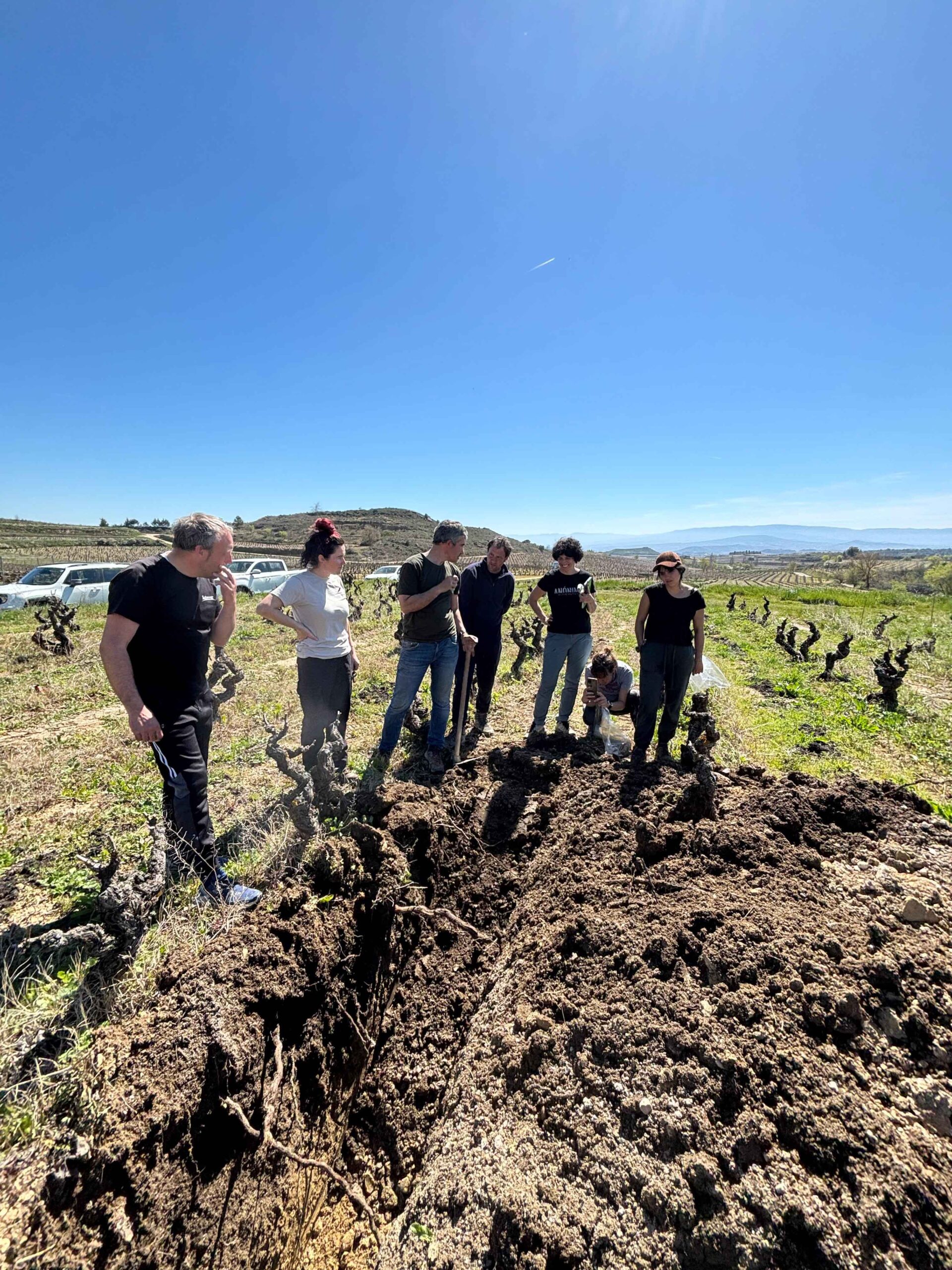
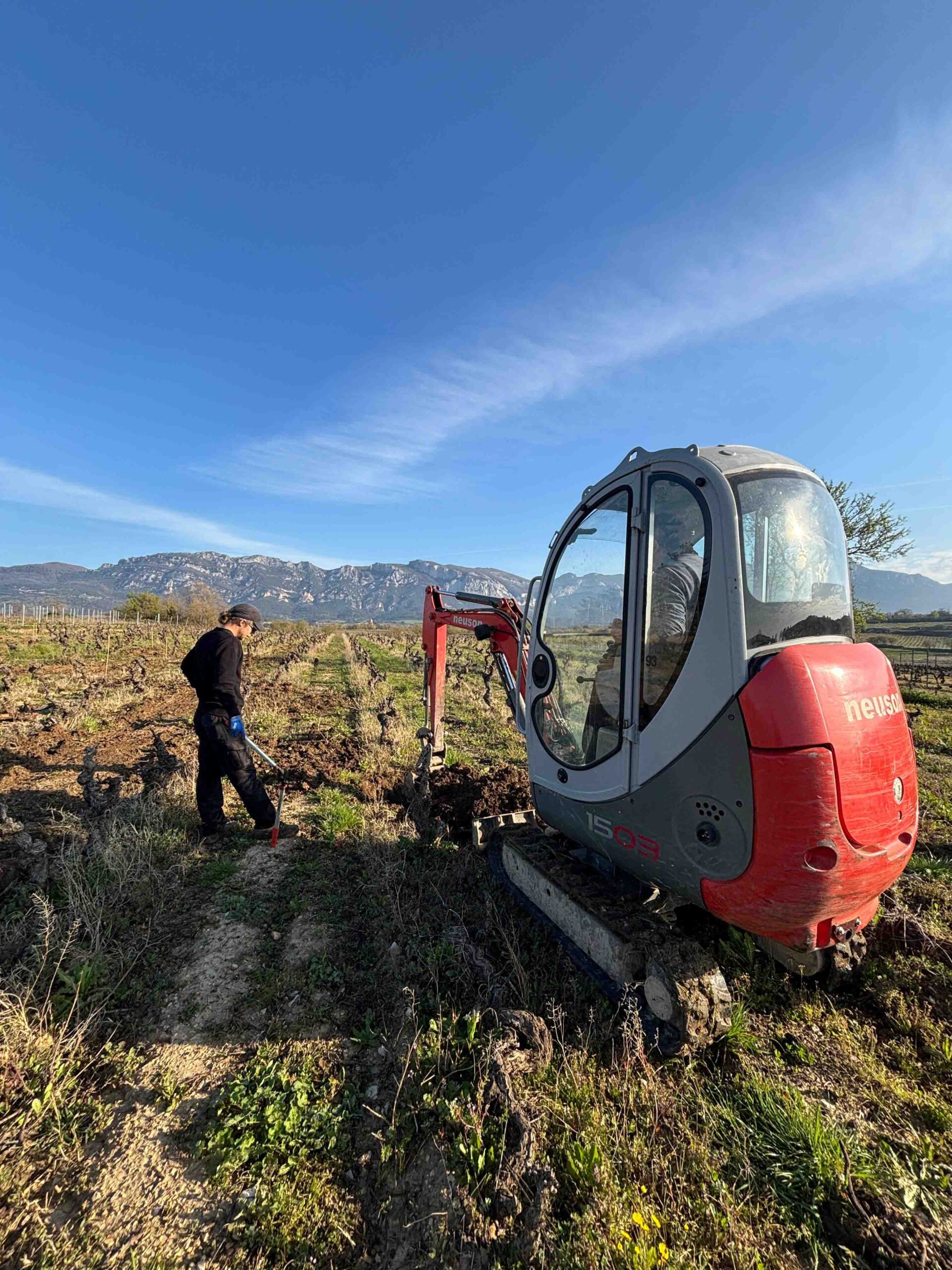
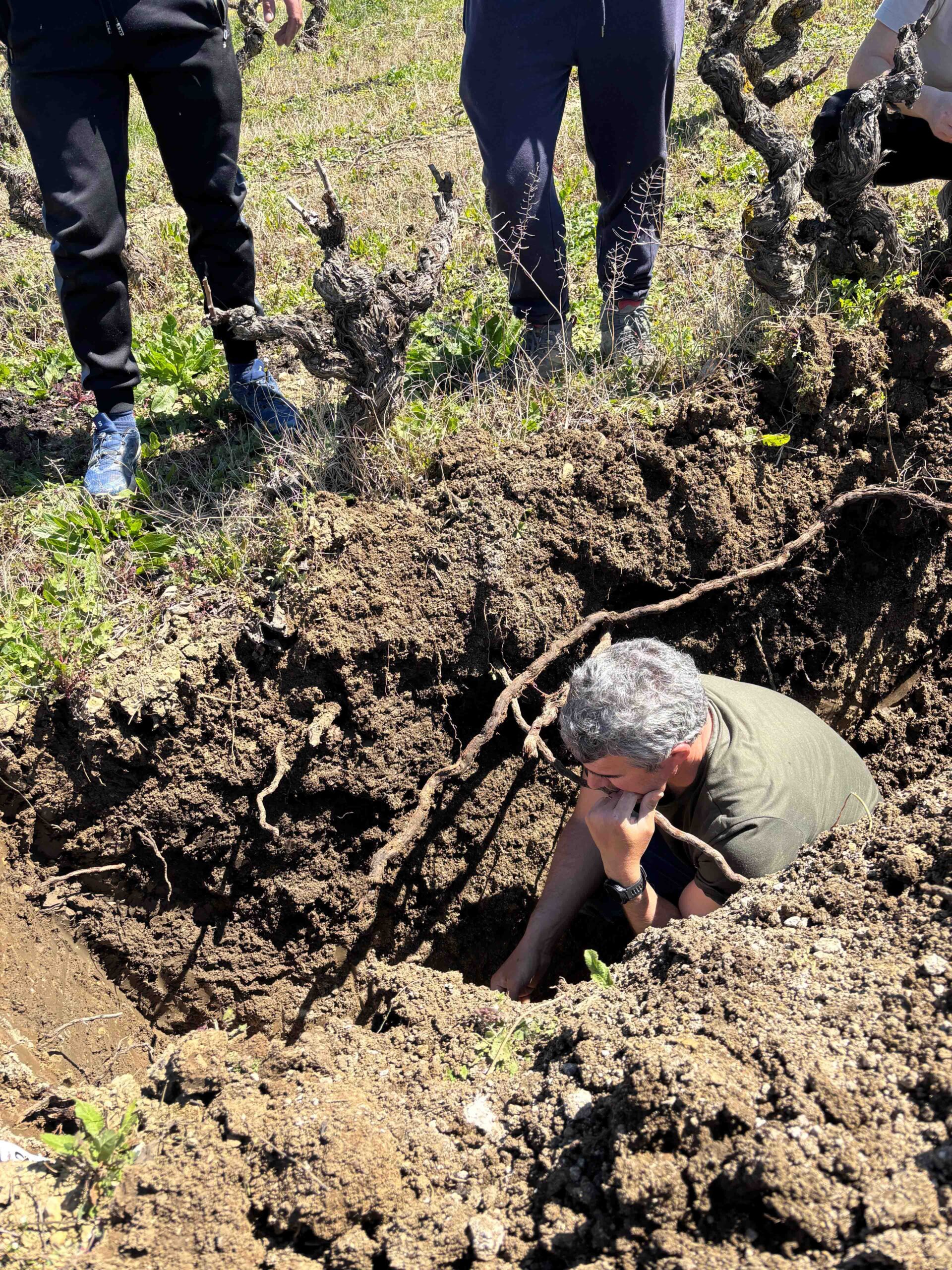
Combating Armillaria mellea
Finally, in a plot affected by the Armillaria mellea fungus, a study has been initiated to investigate the factors that reduce soil health and, consequently, lower the chances of successful vine replanting. Specifically, before planting the new vines, straw and pine bark were incorporated into the soil in various combinations—one of them inoculated with Trichoderma carraovejensis, a fungus capable of protecting vines against wood diseases. In another case, a liquid product tested in other R&D projects targeting Armillaria was applied. The goal is to create a favorable microbial environment in the root zone that allows the vine to develop healthily—even in the presence of the pathogenic fungus—promoting coexistence without compromising vine growth.
The replanting process was carried out manually, using pressurized water injection to ease the insertion of the vines into the soil. Each vine was then protected with a staking system to shield it during its early development stages and ensure proper growth.
Most of these actions are part of the REVIVID project, co-funded by the European Union and the Centre for the Development of Industrial Technology (CDTI).
Now begins a monitoring phase to evaluate which methods are most effective in restoring the viticultural treasure we have in Leza.
